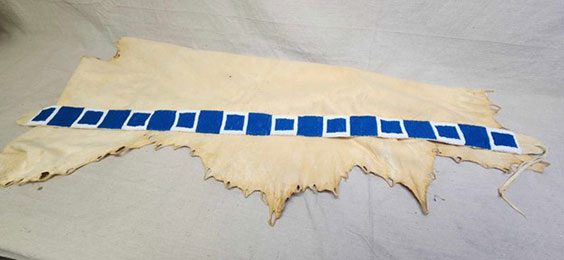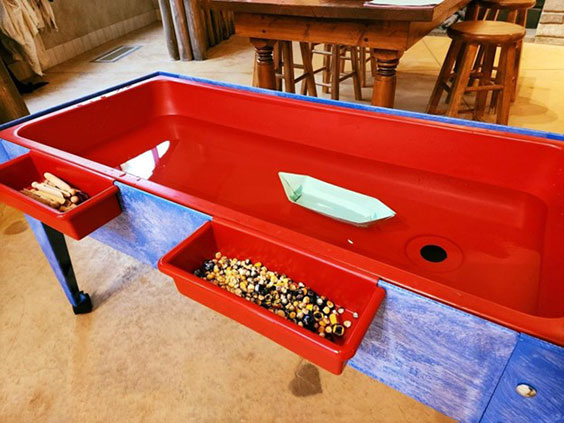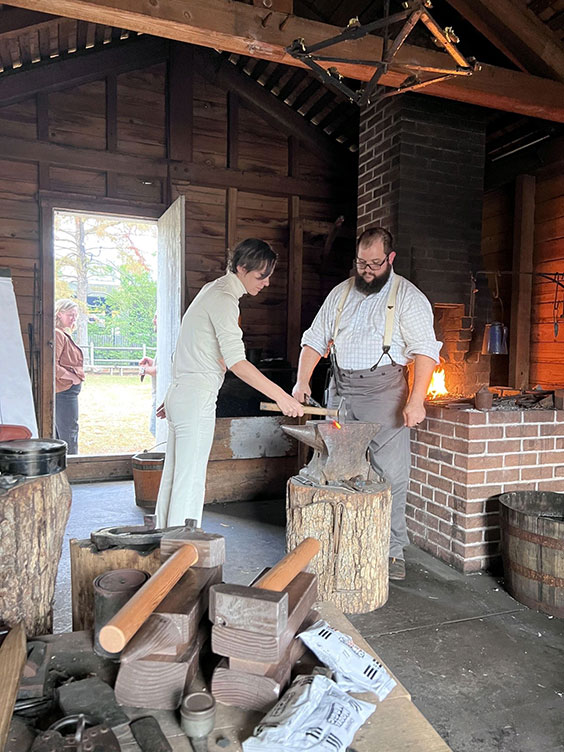A Dog Blog: 5 Things Shaped Like Dogs in the State Museum Collections
February is the month of love. Do you know what I love? Dogs! Here are some artifacts in our museum collections that make me say, “What a good boi!”
1. Doorstops
Shaped like Boston terriers, this set of cast-iron doorstops held open doors in the Devils Lake area around the 1930s. The Hubley Manufacturing Company is well-known for cast-iron toys, but they also created doorstops, bookends, and door knockers. These helpful pups were originally sold with a leather collar and a leash.
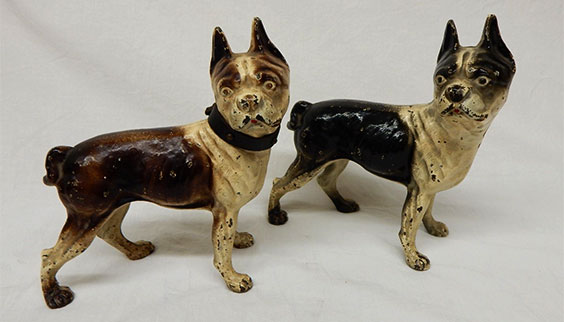
Sturdy silent types. SHSND 16695.1-2
2. Nutcracker
Everyone knows dogs love treats. Gustav and Bertha Helm used this cast-iron canine cruncher in their home three miles south of Mandan. Although its age is not known, the nutcracker was likely produced in the 1910s or 1920s.
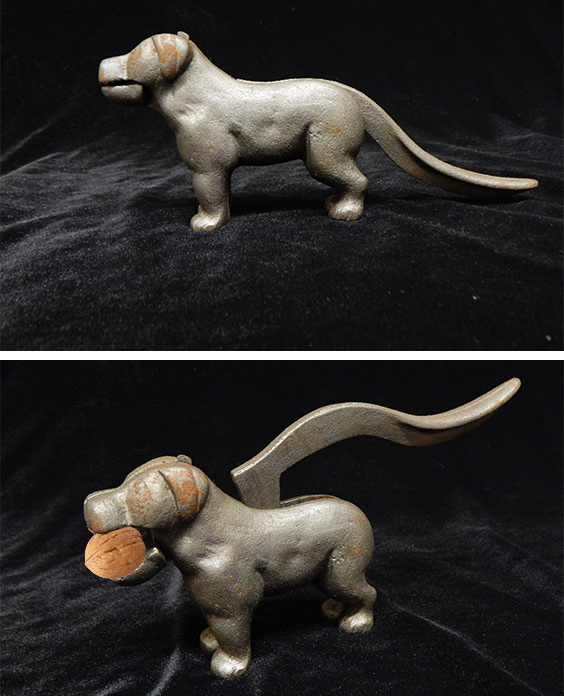
Ready to crack your toughest nuts. (Shown with a photoshopped nut for full effect.) SHSND 2007.80.95
3. Dachshund Woodcarving
Ben Ehreth of Mandan carved this little pal in March 2001. Ben first started carving in 1973. He was largely self-taught in the craft and gave away his creations as gifts. Ben’s son and daughter-in-law Mike and Linda Ehreth received their dachshund friend along with many other Ben Ehreth originals.
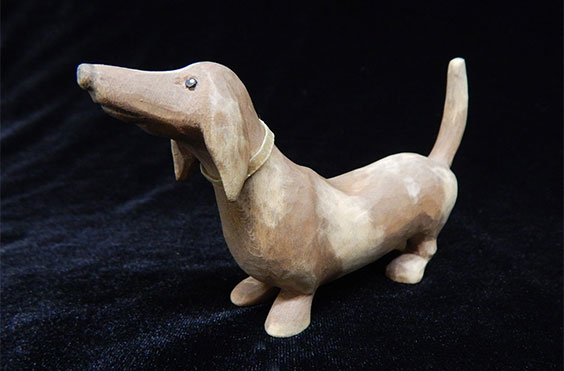
So cute you can almost see his tail wag. SHSND 2018.6.2
4. Stuffed Animals
These two chunky puppies kept Hazel McCulloch company while growing up near Washburn in the early 1900s. The homemade hounds are stuffed with straw around a wire frame. Hazel became one of the first 12 faculty members at the Minot Normal School (now Minot State University). She served on the staff from 1913 to 1959 as a training school supervisor and history professor. Students can now stay in a residence hall named in her honor.

Loved so much, their eyes fell out. SHSND 15574.1-2
5. Salt and Pepper Shakers
The Wahpeton-based pottery company Rosemeade was well known for its eclectic salt and pepper shaker sets. You can get the spice of life from any number of flora and fauna: flickertail gophers, a prairie rose, pheasants, cacti, and 13 different breeds of dogs! Made sometime between 1953 and 1961, these disembodied cocker spaniel shakers are ready to add excitement to your meal. But they don’t seem happy about it.
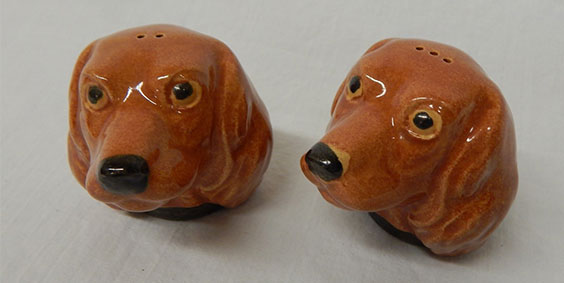
They're making that face to let you know they also want to be eating your food. SHSND 2017.55.16


